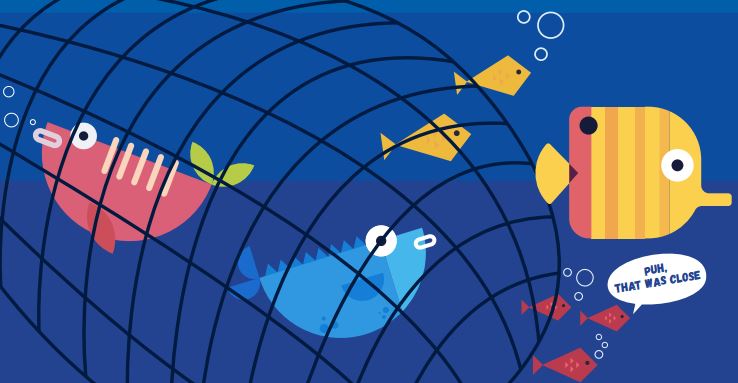
Overfishing is the unsustainable practice of removing fish from their habitats at a rate faster than they can reproduce, leading to depleted fish populations, ecosystem damage, and potential species extinction
Causes of Overfishing
Increased Demand
Growing global populations and economies have increased the demand for seafood, putting pressure on fish stocks.
Advanced Technology
Sophisticated equipment, including sonar, advanced nets, and factory ships, enables massive catches, accelerating depletion.
Illegal and Unregulated Fishing
Unmonitored and illegal fishing activities contribute significantly to the problem, making it harder to manage fish stocks sustainably.
Governmental Subsidies
Economic incentives from governments can sometimes encourage overfishing by reducing the cost of fishing operations.
Consequences of Overfishing
Coral Depletion
Overfishing can also allow seaweed to grow, which often hinders coral reproduction.
Population Collapse
Fish populations can decline to levels too low to recover, leading to long-term or permanent loss of species.
Ecosystem Disruption
The removal of fish, especially top predators or key species, disrupts the delicate balance of marine ecosystems and food webs.
Biodiversity Loss
Overfishing is a major driver of biodiversity loss in the oceans, affecting not only fish but also marine life such as sharks, dolphins, and whales that depend on fish for food.
Economic and Social Impacts
Many coastal communities rely on fishing for their livelihoods and food security. Overfishing threatens these sources of income and sustenance.
Solutions and Management
Fisheries Management
Effective management strategies, including setting sustainable catch levels, enforcing quotas, and managing fishing effort, are crucial for preventing overfishing and ensuring fish populations can recover.
Sustainable Seafood Choices
Consumers can make informed choices to avoid overfished species and support fisheries that adhere to sustainable practices.
Reduced Bycatch
Efforts to minimize bycatch (the accidental capture of unwanted species) through better fishing gear and practices can help protect non-target animals.
Did You Know?
- More than one-third of all sharks, rays, and chimaeras (are now at risk of extinction because of overfishing
- Tuna numbers have dropped by 60% since the 1970s.
- Over 3 billion people eat fish as their main source of protein.
- Sea turtles often get caught in nets accidentally and can’t swim to the surface to breathe.
- Smaller fish like anchovies are a big food source for bigger fish, seabirds, and marine mammals.
- Protecting just 10% of the oceans can help fish populations grow and make ecosystems healthier.
- Reducing waste and only buying sustainable seafood helps protect marine life and our planet.

